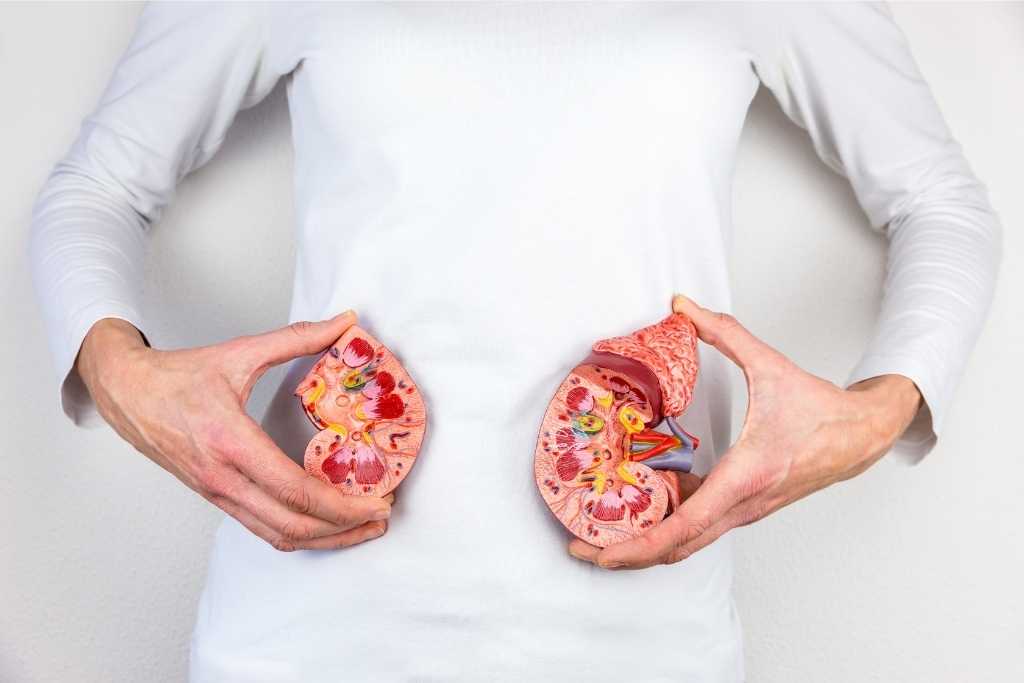Chronic Inflammation: The “Root” of Nerve Damage
Most of us think of the immune system as protection to keep us safe from threats like bacteria and viruses. But that’s only half of its job. Just as importantly, the immune system is what heals us after the threat has left damage behind.
The more we learn about how the immune system works to protect and heal us, though, the more we realize just how damaging it can be as well.
Your immune response is one of those things where too much of a good thing is no longer a good thing.
A long-term response of the immune system is called chronic inflammation.
Although chronic inflammation develops silently and is often undetected, this persistent, low-level inflammation is the cause of most chronic diseases.1 2
What is Inflammation?
Most of us think of inflammation as bad. You strain your ankle and it swells up like a balloon, making it difficult to walk. Or you catch a cold and your throat swells up making it difficult to swallow.
These reactions are bad, right? Well, no. Not exactly. This type of inflammation, called acute, is a result of your body flooding the area of injury or infection with what it needs to resolve those problems.
To explain a simplified version of this process, there are two cell types of the immune system you need to know about.
Macrophages 1 and macrophages 2. We’ll call them M1 and M2 for short, as they are often called in the medical literature.
Inflammatory Macrophages 1 (M1)
M1 are white blood cells that are proinflammatory, meaning they initiate inflammation. At the first sign of a problem in our body, an alarm gets activated to alert these first responders to rush to the scene.
A problem is anything that the body doesn’t think belongs and may cause harm.
Examples would be:
- Bacteria and viruses
- Chemicals and toxins
- High blood sugar
- Damaged cells and injured tissue
These M1 cells come onto the scene first to assess the problem and damage being caused and call for help by signaling a protein called cytokine. The cytokine call for inflammation to protect tissue from further damage.
Inflammation then brings in extra blood to the affected tissue. Pressure from the increase in blood can irritate nerve fibers and lead to pain.3 As a result, the tissue in the inflamed area may not function like it should.
Once the situation is under control and the threat is eliminated, M1 helps to kill and remove dangerous damaged cells to make way for new healthy cells.
There is some degree of this going on all the time. Cancer cells, for example, attempt to invade us as we go about our days. But this process is taking care of them behind the scenes.
Next, a new signal gets activated calling for the immune system’s repair team, the anti-inflammatory M2 cells.4
Anti-Inflammatory Macrophages 2 (M2)
M2 cells are anti-inflammatory — meaning they shut down the inflammation and start building healthy tissue. Their job is to regenerate tissue that was damaged by the threat.5
To sum all this up: “M1 means kill, M2 means heal.”6
From this scenario, inflammation now looks like a good thing, right?
It is —- as long as it is working as it was designed.
Healing and tissue repair requires these two to work very well together in coordinating both the proinflammatory and anti-inflammatory stages of the immune system.7
And they cannot work together at the same time. Each has their own turn.
Therefore, to reach the healing repair stage, chronic inflammation must first be minimized.
What is Chronic Inflammation?
At a rapidly increasing rate, and in a rapidly rising number of people, the shift from proinflammatory M1 “kill” stage over to the anti-inflammatory M2 “heal” stage short-circuits in a way.
As a result, the immune system stays in the M1 kill stage.
When stuck in this stage over long periods of time of months or years, these macrophages begin to malfunction. It’s not all that different from a scenario where a guard dog is over stressed for too long, causing him to lose his sense for right and wrong, and he goes on to attack anything, friend or foe.
These macrophages do the same. They lose their sense for what is a real threat and what is normal and healthy. They go rogue and out of control — causing damage to healthy tissue.
This is chronic inflammation. And it is what leads to disease.
What Diseases Are Caused By Chronic Inflammation?
You should now be able to see how chronic inflammation can lead to nearly any type of disease.
For example:
- If blood vessel cells get damaged, we get diseases involving blood pressure, arteries, veins and the heart.
- If neurons in the brain get damaged, we get diseases like dementia, Alzehimer’s, Parkinson’s, and chronic fatigue.
- If organ cells get damaged, we get diseases involving organs like lung, liver, kidney, skin and thyroid diseases, including cancers.
- If neurons in the peripheral nervous system get damaged, we get peripheral neuropathy.
What Causes Chronic Inflammation?
Chronic inflammation is essentially brought on by the constant bombardment of what our body recognizes as threats.
It’s an overworked immune system.
Some of what overworks our immune system we have little control over, such as viruses and bacteria or environmental toxins we come in contact with. But a healthy immune system under normal conditions is designed to handle those.
Where we get into trouble is when the body has more threats than the immune system is designed to handle. Some threats may be inherited, but many are a result of an unhealthy lifestyle.

Too Much Body Fat
Excess body fat, especially in the abdomen, increases inflammation. Fat tissue contains inflammatory M1 macrophages and produces excess cytokines, the chemical messenger that signals the start of inflammation.11
Diabetes and Insulin Resistance
Too much sugar in the blood triggers cytokine messaging which leads to an inflammatory response.8
Cardiovascular Disease
Bad cholesterol (LDL) from unhealthy foods infiltrates artery walls, causing inflammatory molecules to begin the inflammation process.9 As a result, layers of fat and cell debris build up causing the artery wall to thicken and stiffen, narrowing the channel for blood flow.10 If these deposits break open, they spill into the bloodstream and cause a heart attack.
Infections
When microbes such as bacteria, viruses, fungi, and parasites are detected, the immune system deploys. The reaction can be short-term if the problem is resolved swiftly. Or if the microbe is especially strong, the immune system response can be strong as well. This strong response can cause cell injury. Chronic infections can go on to cause organ damage.
Stress
Stress over-activates the immune system to create chronic inflammation.
Tissue Damage
When there is tissue damage in the body from any source, inflammation is triggered.12 13 Tissues may be persistently damaged in any number of ways, like reduced blood flow from diseases or lack of exercise, chemicals, extreme temperatures, or unresolved injuries like compressed nerves or repetitive motions over time.
Hypersensitivity
When your immune system is overworked, it can become reactionary to anything in the environment that is normally harmless, causing additional inflammation. Being routinely exposed to allergens, can fall into this category as well.14
Autoimmunity
If you have an autoimmune condition, your body mistakenly sees itself as a threat and attacks its own tissues, leading to inflammation.
Unresolved Acute Inflammation
In some cases, a person may not fully recover from acute inflammation, like a bacterial or viral episode. Sometimes, this can lead to chronic inflammation.
Chronic Toxin Exposure
Long-term overexposure to toxins and chemicals may lead to chronic inflammation.15 On-going exposure may come from sources such as chemicals in household products like cleaners and fragrances, chemicals found in foods, like artificial additives, smoking, alcohol, job-related chemicals, and so on. 16 17 18 19
Factors That Increase Risk of Chronic Inflammation

When it comes to fighting off chronic inflammation and disease, the general health of your body plays a major role. In other words, the more risk factors you have, the more likely you are to develop further disease. This is why people often have more than one diagnosis. When your body is under the stress of a disease, the infamous snowball effect goes into action.
Following are examples of common factors that increase the risk of chronic inflammation, which then increases the risk of disease, and that disease then increases the risk of more disease.
- An unhealthy diet of sugar, unhealthy fats, toxins, and chemical additives
- Disrupted sleep
- Unmanaged stress
- Obesity
- Older age
- Smoking
- Alcohol overuse
- Lack of exercise
- Ongoing exposure to allergens
- Gut distress
How to Test for Inflammation
The most common way to measure chronic inflammation is to conduct a blood test for c-reactive protein or high-sensitivity c-reactive protein (which detects lower chronic levels than standard c-reactive protein) and homocysteine levels.20 21 Your doctor may also look for elevated interleukin-6 and tumor necrosis factor alpha.22 23
Can Damage Be Reversed?
Your body is designed to repair itself, as long as the threshold of damage has not been exceeded.
However, your body cannot be in both the proinflammatory and anti-inflammatory stages at once. So if threats remain and inflammation is constantly triggered, your immune system can get stuck in the proinflammatory stage and continue to damage your body instead of heal it.
Once threats are minimized and your body shifts to the healing anti-inflammatory stage, your body can begin to repair itself.
How to Reverse Chronic Inflammation

The choices you make in how you care for it go a long way to inflame or extinguish smoldering chronic inflammation. Keeping in mind one simple question as you go through your day can help to keep you mindful of how you are helping or hurting your health.
Think: “Is this inflammatory or is this anti-inflammatory?”
Eliminate Inflammatory Foods Some foods trigger or worsen inflammation. Foods like sugar and processed foods are pro-inflammatory.
Eat Plenty of Anti-Inflammatory Foods Eating anti-inflammatory foods such as those that contain high amounts of phytonutrients, antioxidants, and omega-3 fatty acids can help to fight chronic inflammation.
Control Blood Sugar High blood sugar over time causes the decreased ability of your body to take sugar (glucose) out of your blood and into your cells where it is used for energy. This is called insulin resistance. Insulin resistance causes chronic inflammation. Avoid simple carbohydrates, such as foods made with flour like bread, or white rice, chips, sugar, pasta, and anything with high fructose corn syrup. Eat a combination of protein, healthy fats, and fiber in every meal. Eliminate snacks other than those that are nutritious like berries or nuts.
Exercise Regularly Regular physical activity helps protect against disease and reduce inflammation in many ways, like the release of anti-inflammatory proteins and chemicals that block inflammation.24
Get Restorative Sleep When sleeping, your body can concentrate it’s focus on healing. Your brain triggers the release of hormones that encourage tissue growth and repair. It also makes more white blood cells to fight threats, like bacteria and viruses. Not enough deep sleep triggers a range of inflammatory reactions.25
Lose Excess Weight Excess weight is a common contributor to inflammation. Fat actively produces hormones and inflammatory chemicals. This effect helps explain why obesity leads to heart disease, diabetes, and other metabolic chronic diseases.26 27
Manage Stress Chronic stress causes chronic inflammation. Use meditation, yoga, guided imagery, essential oils, and so on to rest your nervous system and manage stress throughout the day.
Don’t Smoke The toxins from smoking injure the tissues in the body, which elevates inflammation. Smokers have high levels of chronic inflammation markers in blood tests. It also worsens chronic inflammatory diseases.
Detoxify Toxins play a major role in chronic inflammation. By eliminating toxins in your daily life as best as possible, you can help to calm down a hyperactive immune system. Toxins that you can focus on eliminating most easily are those like over-the-counter medications, alcohol, processed foods, pesticides, household cleaners, air fresheners, and fragrances.
Get Routine Check-Ups Regular check-ups allow your doctor to diagnose health conditions and recommend ways to minimize or eliminate problems before they worsen and inflammation escalates. Maintaining good oral health is also an important part of not only teeth and gum health but also helps to control inflammation.
3 Best Essential Oils for Soothing Nerve Pain

Peripheral neuropathy comes with a number of different symptoms, each one seemingly more troublesome than…
Is Undetected Kidney Disease Causing You Uremic Neuropathy?

A shocking 30 million people in the United States are dealing with kidney disease, and…
4 Clean CBD Brands You Can Trust

CBD has grown in popularity over recent years, especially for anxiety, pain, and sleep disorders.…
8 Best Supplements for Neuropathy

We know that nutritional supplements -- in addition to a healthy diet -- can help…
What is Peripheral Neuropathy?

If you already have it, you basically know what peripheral neuropathy is. It just refers…
Best Value Red Light Therapy Panel Goes to Mito

As the popularity of red light therapy has grown quickly over the past few years,…
Confused By Your Symptoms? Here’s What They Mean.

Peripheral neuropathy was long known to be a nerve disease that causes symptoms like tingling,…
What Causes Neuropathy?

Neuropathy is very common. It is estimated that about 25% of Americans will be affected.…